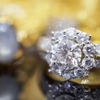The Science Behind the Sparkle: How Lab-Grown Diamonds Are Made
Investing in the Future: The Resale Value of Lab-Grown Diamonds
Lab-grown diamonds have revolutionized the jewelry industry, offering a more sustainable and ethical alternative to traditional mined diamonds. But what is the science that enables the creation of these sparkling gems in a laboratory setting? This blog post explores the fascinating processes behind the production of lab-grown diamonds, shedding light on the technology and innovation that replicate the earth's natural diamond-forming conditions.
The Genesis of Lab-Grown Diamonds
At their core, diamonds are crystallized forms of carbon subjected to extreme heat and pressure deep within the Earth's mantle. Lab-grown diamonds are created using advanced technological processes that mimic these natural conditions, allowing scientists to cultivate diamonds above ground. There are two primary methods used to grow diamonds in a lab: High Pressure High Temperature (HPHT) and Chemical Vapor Deposition (CVD). Both techniques successfully produce diamonds with the same physical, chemical, and optical properties as their mined counterparts.
High Pressure High Temperature (HPHT)
The HPHT method was the first successful process for growing diamonds in a laboratory, developed during the mid-20th century. This method simulates the high-pressure, high-temperature conditions that form natural diamonds.
- Process Overview: A small diamond seed is placed in a carbon-rich environment, typically graphite. The seed, along with the carbon source, is then exposed to temperatures of about 1,400 to 1,600 degrees Celsius and pressures of approximately 5.5 gigapascals.
- Growth Cycle: Under these conditions, the carbon melts and begins to form a diamond around the seed. The process can take a few days to several weeks, depending on the desired size and quality of the diamond.
- Outcome: HPHT diamonds are identical to natural diamonds and can range in color from clear to various hues, depending on the specific conditions and additional elements present during the growth process.
Chemical Vapor Deposition (CVD)
Developed after the HPHT method, CVD has become increasingly popular for its versatility and efficiency in producing high-quality diamonds.
- Process Overview: The CVD process starts with a thin slice of diamond seed, which is placed in a sealed chamber. The chamber is then filled with a carbon-rich gas, typically methane, and heated to temperatures around 800 to 1,000 degrees Celsius.
- Growth Cycle: The gases are ionized into a plasma using microwaves or lasers, causing the carbon atoms to accumulate on the diamond seed in layers, gradually forming a diamond.
- Outcome: CVD diamonds can be grown over a period of weeks and are known for their exceptional clarity and potential for producing larger stones. This method also allows for more control over the diamond's properties, such as color and clarity.
The Advantages of Lab-Grown Diamonds
Lab-grown diamonds offer several advantages over their mined counterparts, making them an attractive choice for consumers and jewelers alike:
- Sustainability: The controlled lab environment significantly reduces the environmental impact associated with traditional diamond mining, which can be destructive to ecosystems and landscapes.
- Ethics: Lab-grown diamonds circumvent the ethical concerns linked to diamond mining, including labor exploitation and funding conflicts.
- Innovation: The ability to control the diamond-growing process opens up new possibilities for creating diamonds with specific qualities or for specialized applications beyond jewelry, such as in electronics or medical devices.
Conclusion
The science behind the sparkle of lab-grown diamonds is a testament to human ingenuity and our pursuit of sustainable and ethical alternatives in the luxury market. By understanding the processes of HPHT and CVD, we can appreciate not just the beauty of these diamonds, but also the remarkable technology that creates them. As the demand for lab-grown diamonds continues to grow, so too will the innovations in their production, promising a future where luxury and sustainability are inextricably linked.












